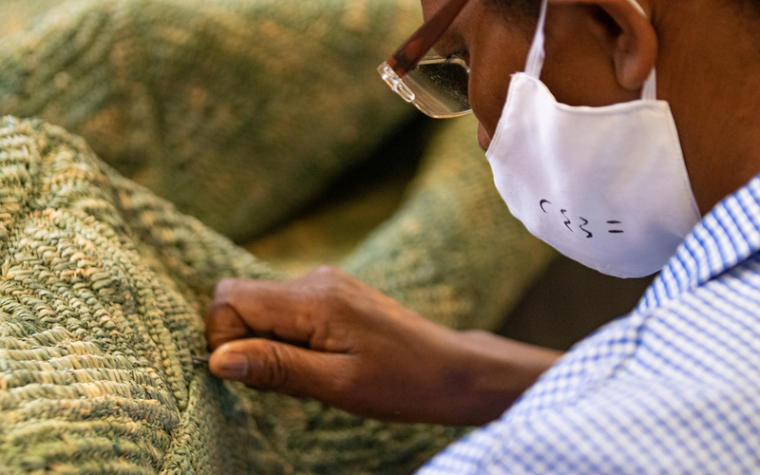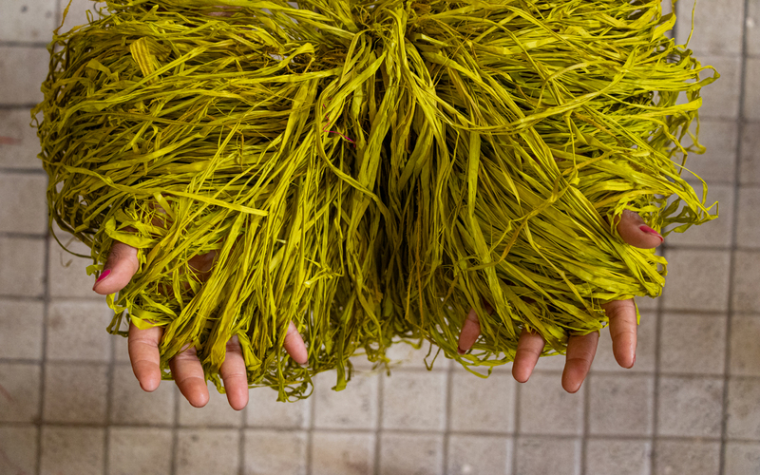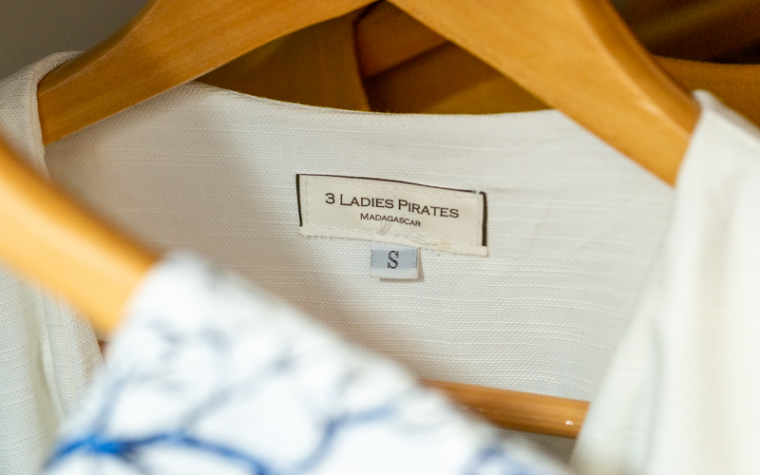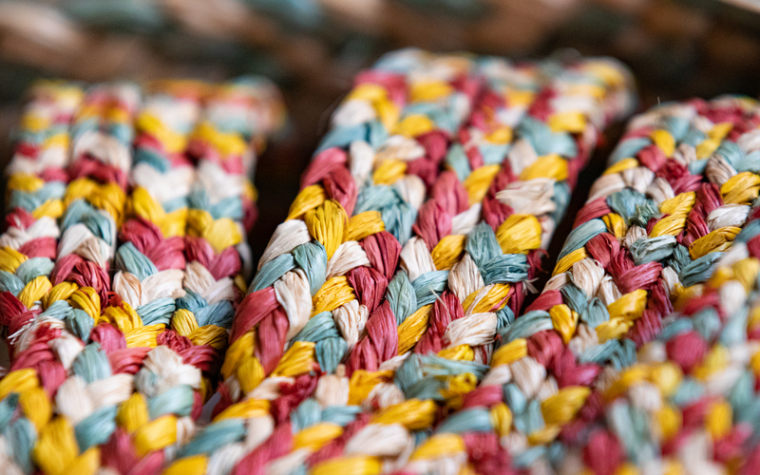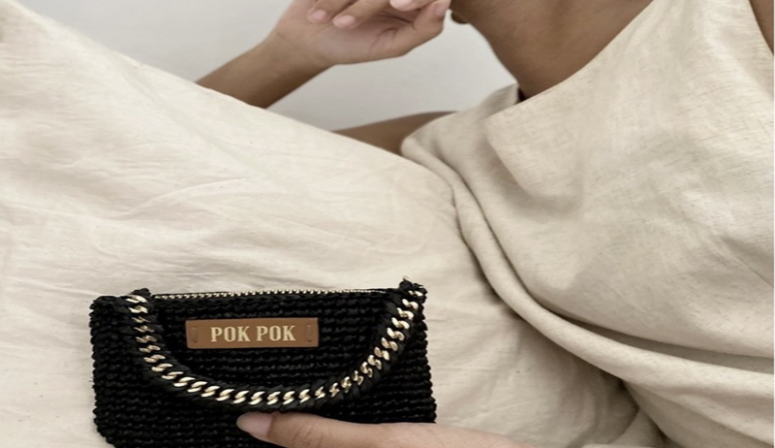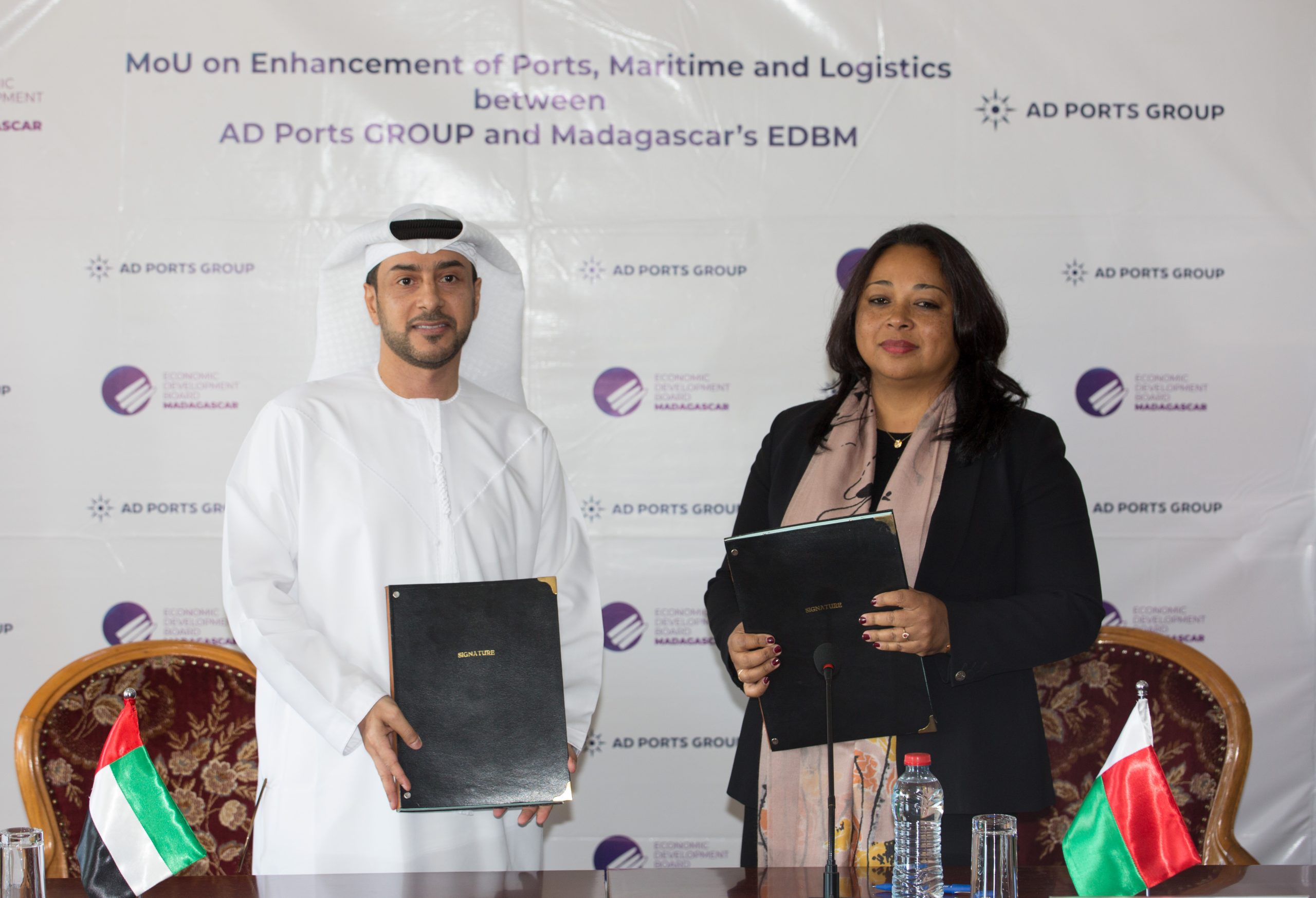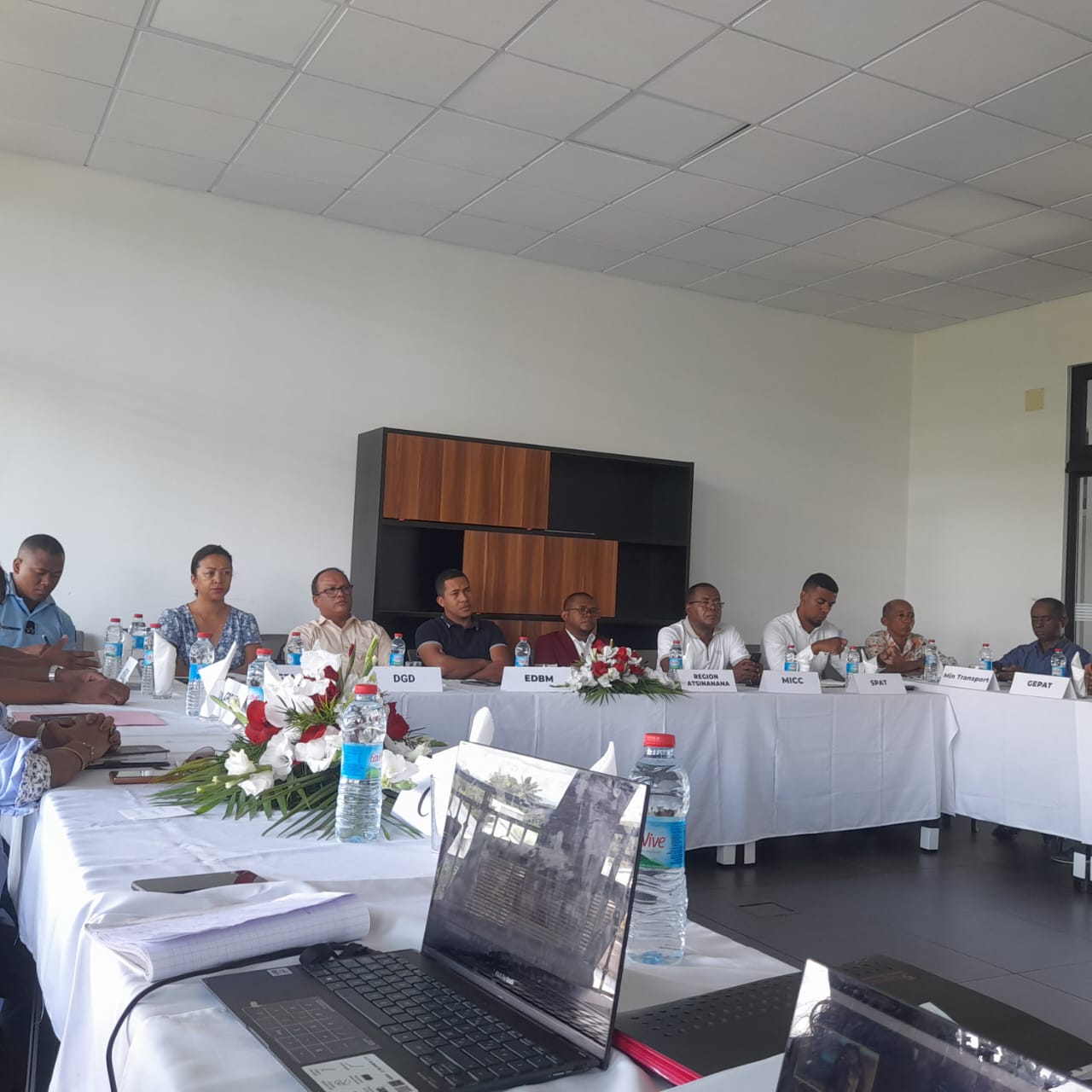Madagascar is following a global trend
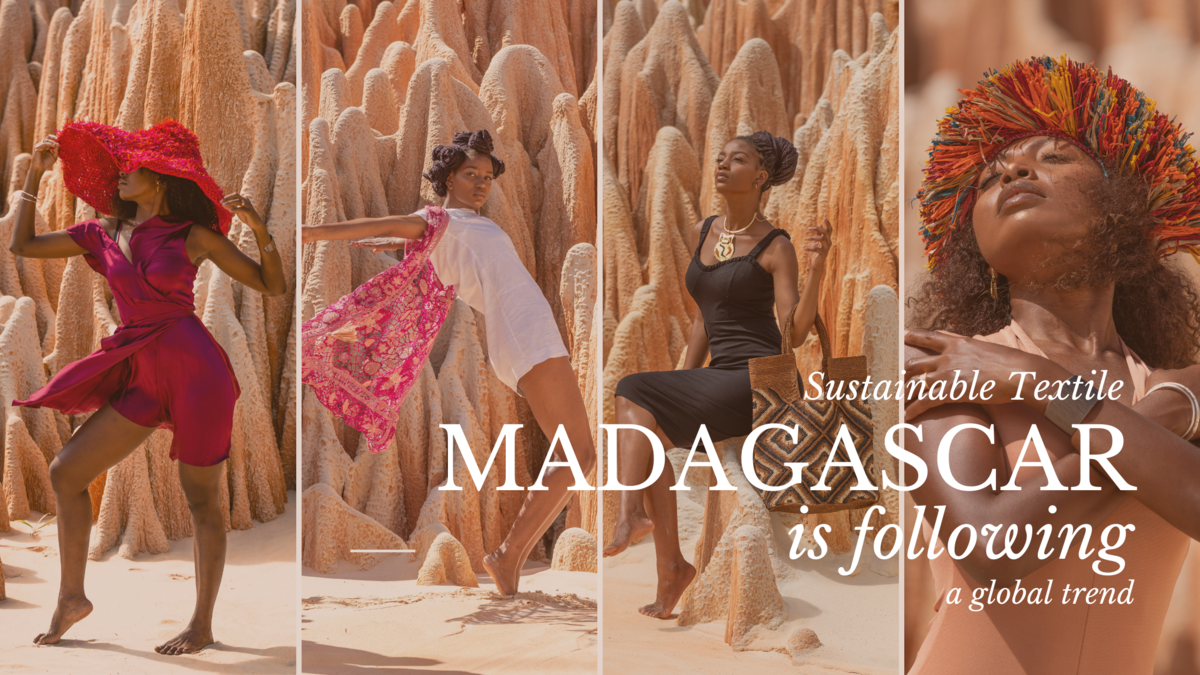
Madagascar is following a global trend
Responsible consumption is today the focus of attention at the global level. The biggest high-end textile brands such as Nike, Balenciaga, Gucci, Prada … are then increasingly committed to a sustainable economy through their designs. Constantly growing, sustainable textiles are a multi-billion dollar market. Aligning themselves with this trend, Malagasy textile industries and designers are beginning to adapt themselves towards more ethical approaches.
Today’s and tomorrow’s textiles advocate “slow fashion”, a luxury component that favors quality, product rarity and sometimes traditional or typical know-how of a country. This reduces the waste of raw materials, energy, water, etc., in favor of recycling, the recovery of waste and/or biodegradable materials. The integration of a more circular economy will solve the issue regarding resource depletion.
The green strategy will also create new business growth opportunities and a more competitive economy. “The green, ethical and fair branding not only builds a healthy economy but also constitutes a customer marketing strategy to establish trust in the label,” explains David Roger, CEO of Buy Your Way, a CSR consulting firm. An international benchmark in the field, the firm has coached the largest Malagasy companies to enhance their CSR approaches.
The latest generation of creators and entrepreneurs demonstrates greater enthusiasm for socio-environmental responsibilities. Losing none of its nobleness, haute couture is all the more admired by its customers through ethical approaches and sustainable materials. This high-end clientele, composed largely of celebrities, uses its influence to promote responsible consumption patterns. “In the last ten years, there has been a generalized awareness for more environmentally friendly approaches,” says David Roger.
The green label, a selling brand.
The most fashionable luxury brands are becoming increasingly committed to the environment. As a result, they enjoy the influence of high-end ambassadors who are as committed as they are. For the Met Gala in 2016, Emma Watson wore a Calvin Klein-designed dress made from 100% biodegradable recycled plastic bottles in collaboration with Livia Firth’s Green Carpet Challenge. An avid UN supporter, the young woman uses her fame to address major causes on a global scale.
Pharrell Williams collaborated with G-Star in “Raw for the oceans” to design a denim collection with plastic from the oceans. Creative director of Bionic Yarns, the artist promotes a responsible denim fashion consumption mode, while playing on a very creative universe. The artist today has a great hold on a market of USD 56,178.1 million. Prada also puts the oceans at the heart of its concerns by piloting the “Sea Beyond” project alongside UNESCO. Gaining popularity, the brand saw its online sales climb 200% in 2020.
Vivienne by Westwood designed a dress for Lily Cole, for the Oscars in 2016 using recycled plastic bottle fabric. The Made in Africa project created by Westwood in collaboration with the Ethical Fashion Initiative of the International Trade Centre, a joint agency set up by the United Nations and the World Bank, was indeed a huge success. With 36 million plastic bottles recycled in five years, the project has employed 1,500 artisans in Kenya. These artisans have been paid above the local average.
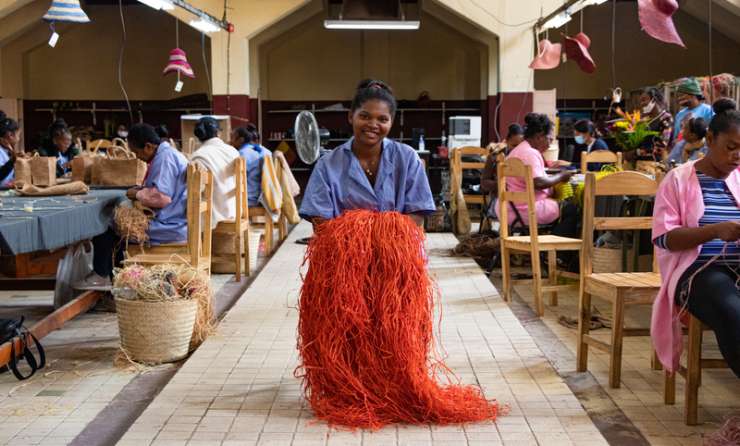
The world is more concerned about the origin of what it consumes
Gucci, the top most popular luxury brand this year according to Forbes, has also launched shoes made of Apinat, a 100% biodegradable bioplastic. The undisputed favorite brand dressed Billie Eilish and Harry Styles at the Grammy Awards.
In addition, since 2010, more than 3 billion plastic bottles have been diverted from landfills to make Nike products, the world’s top-selling textile brand. Number 2 in popularity in this year’s Forbes ranking, the company has seen a 59% increase in online sales despite the crisis.
The latest generation of high-profile designers is also vying for a more sustainable fashion world. Viktor & Rolf, Iris Van Herpen, Ronald van der Kemp, Xuan-Thu Nguyen… are among the great names who convey their ecological and responsible vision through their artistic and avant-garde collections. Huts of wool and denim are used for true works of art.
From a design perspective, there are increasing opportunities to tell a story through clothing. Designers are often inspired by nature and the integration of sustainable design. This gives additional meaning to both the designer and the wearer, rather than in a purely aesthetic vision.
Malagasy companies are riding the trend
Akanjo Madagascar, an industry known for its decades of trusting relationships with top luxury houses, is working on Gabriela Hearst’s spring 2022 collection from the house of Chloe. In order to maximize its positive ecological and social impacts, the brand is using organic silk, recycled cashmere, and dead materials in 55% of the collection’s ready-to-wear. The only Malagasy textile industry certified ISO 26000 with three stars, Akanjo Madagascar is a member of the World Fair Trade Organization (WFTO). Besides, 15% of Chloé’s new collection is made by the brand and Manos del Uruguay.
Pok Pok, a Malagasy luxury brand of raffia-based handbags, stands out for its environmentally friendly approach. The young company wants to promote the authenticity of Malagasy know-how for the benefit of its unique biodiversity. “We are aware that a fundamental and deep change is necessary to preserve our incredible ecosystem,” says Fitia Randriamifidimanana Rasolofoniaina, co-founder of Pok Pok.“We are committed to being actors of this change, through our daily commitments,” she adds.
To make its raffia accessories, the brand uses dyes up to Oeko Tex standards, not harmful to the environment. Oeko-Tex is indeed a label comprising several technical standards, aiming to certify the sanitary and ecological qualities of textiles and leathers. It guarantees the absence of toxic products for the body and the environment. Exporting 60% of their products, Pok Pok benefits from and targets a responsible clientele, who are sensitive to the origin of what they consume. Fashion enthusiasts call this “conscious fashion”.
Made For A Woman, by Eileen Akbaraly, also showcases the authenticity of traditional basketry arts in Madagascar. Socially and environmentally committed, the brand took its cutting-edge raffia luxury accessories to the Cannes Film Festival this year when it received the prestigious “Best Commitment” award from the Better World Fund. The Big Island is renowned for its production of raffia, which accounts for 80% of the world’s supply. Endemic and widespread on the island, this exotic fiber seduces fashion lovers worldwide and is in great demand on the fashion market.
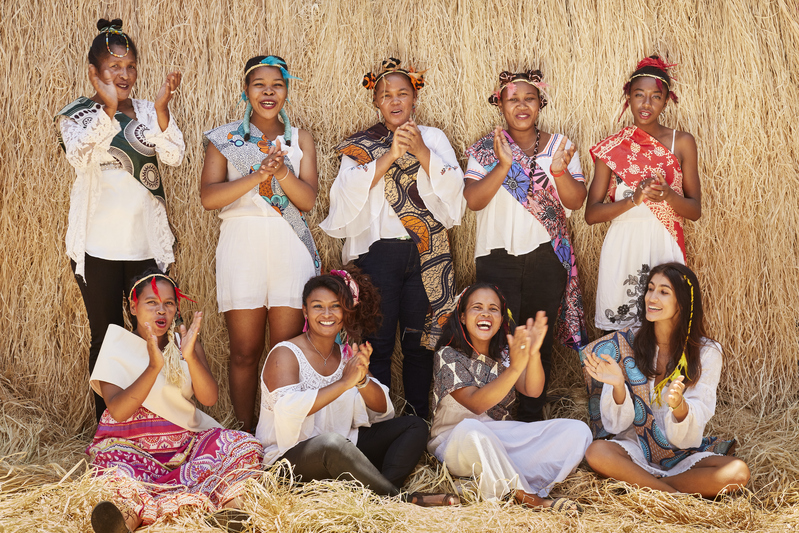
Made For A Woman promotes Malagasy women’s know-how and supports their sustainable empowerment ©Dylan Cabano
In addition, large industries such as Ultramaille and Epsilon are particularly sensitive to environmental protection. From production to treatment and recycling of used water, these brands are among the most advanced in Madagascar in terms of CSR according to Buy Your Way. Giving preference to natural fibers, they aim at reducing their CO2 emissions as much as possible.
What opportunities in Madagascar?
A European Union initiative called the European Clothing Action Plan has been launched to improve the sustainability of textiles throughout their life cycle. Textile waste that ends up in landfills has thus become a major global concern. Up to 95% of the world’s textiles landfilled each year could be recycled.
Madagascar has great opportunities in this regard. It has been shown above that plastic can be recycled and used in textiles. Also, according to a study by the Indian Ocean Commission (IOC), the Big Island has an available deposit of 32,996 tons of plastic per year. This represents 10% of the household waste collected in a year. And one of the largest local beverage industries can produce up to 800 tons of PET waste per year.
To valorize these wastes, initiatives like Vitogaz Madagascar can process plastic into fabric. The company invited French designers from The Polyfloss Factory, to demonstrate the concept of their Polyfloss machine. This plastic recycling process is inspired by the cotton candy machine and produces flexible wool. This wool can be reused for thermal insulation, packaging, design objects… It can also be used for textile and craft creations.
Discarded fabrics can also be recycled. Le Relais, the leader in France in the collection, sorting and recovery of textiles, household linen and shoes (TLC) is present in Madagascar. Thanks to this activity, the association has created more than 350 jobs in Africa and Madagascar. It sorts, recycles and exports between 2,000 and 3,500 tons per year. And only 15% of the collected textile ends up as final waste.
In addition, Bruno Pieters, founder of the transparent and sustainable company Honest By, had the idea of using 3D printers in the fashion industry in the future. Already an existing technology in Madagascar, the filaments used in the 3D printing process could design fashion accessories. Even biodegradable, recycled materials can be introduced. Some printers will be able to transform household waste into filaments.
And apart from waste recovery, the organic sectors in Madagascar are in full expansion. This highlights the natural and ethical textile fibers, which are highly valued worldwide.

Sources and bibliographies
- Debbie Moorhouse & Danielle Moorhouse (2017). Sustainable Design: Circular Economy in Fashion and Textiles, The Design Journal.
- pure waste.org
- Étude de la gestion des déchets plastiques de la zone COI, Carole CHARBUILLET, JeanMarc MEURVILLE, mars 2018
- https://www.ultramaille.com/protection-environnement/
- https://www.vogue.fr/mode/article/comment-la-haute-couture-pousse-la-mode-vers-un-avenir-plus-durable-iris-van-herpen
- https://www.forbes.fr/luxe/quelles-sont-les-marques-de-luxe-les-plus-populaires-en-2021/?mc_cid=70bdeec93b&mc_eid=620ecc86c6
- https://www-forbes-com.cdn.ampproject.org/c/s/www.forbes.com/sites/allysonportee/2021/06/08/chlos-spring-2022-collection-all-about-sustainability-with-uruguayan-influences/amp/
- https://www.vogue.fr/mode/article/comment-la-haute-couture-pousse-la-mode-vers-un-avenir-plus-durable-iris-van-herpen
- https://www.vitogaz.mg/actualite-fev2019.php
- https://www.modeintextile.fr/jean-devenir-durable/


